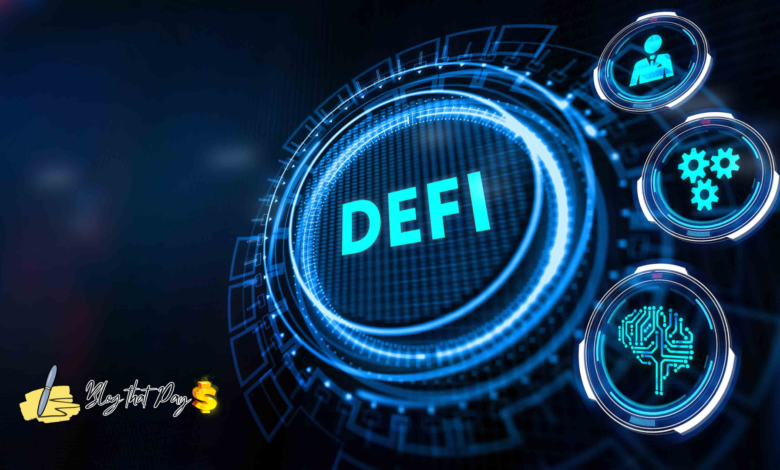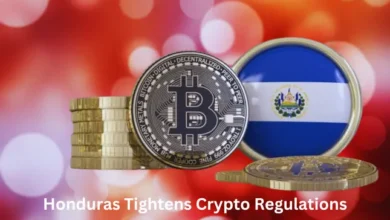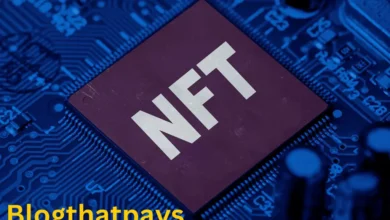Decentralized Finance (DeFi)

Decentralized Finance, commonly referred to as DeFi, is a rapidly growing and transformative ecosystem in the world of finance. It is a network of financial applications built on top of blockchain technology, primarily Ethereum, that aims to remove the need for traditional financial intermediaries such as banks, credit unions, and other centralized institutions. This innovative approach provides individuals with greater financial freedom, control, and flexibility, while potentially lowering costs and increasing transparency.
The core concept behind DeFi is to enable the creation of a more open, transparent, and accessible financial system without the reliance on central authorities. By leveraging decentralized platforms and protocols, DeFi allows for the development of various financial products such as lending and borrowing, decentralized exchanges, and tokenized assets. Through the implementation of smart contracts, these applications can be created and executed autonomously, driving efficiency and enhanced trust in the financial system.
With the growing adoption of blockchain technology and the increasing interest in cryptocurrencies, DeFi is poised to disrupt traditional finance and reshape the way people interact with money. It carries the potential to revolutionize industries such as banking, investment, and insurance, providing opportunities for unbanked and underbanked populations to participate in the global economy. As DeFi continues to evolve, it is crucial for stakeholders to be aware of its potential impact on the finance ecosystem and prepare for the forthcoming changes.
Overview of DeFi
Defining Decentralized Finance
Decentralized Finance, or DeFi, refers to a system of financial products and services that are built on blockchain technology, mainly Ethereum. By leveraging smart contracts, DeFi aims to create an open, permissionless, and transparent financial ecosystem that is accessible to everyone. This ecosystem includes popular financial services such as lending, borrowing, trading, and asset management.

Historical Context
Historically, the traditional financial system has been centralized, which often results in a lack of transparency, inefficiencies, and limited accessibility. With the emergence of Bitcoin in 2009, blockchain technology paved the way for decentralized finance. Ethereum’s launch in 2015 marked a significant milestone for DeFi, as its smart contracts and ERC-20 token standard enabled developers to create a wide range of financial applications.
Some early DeFi projects include:
- MakerDAO (2015): A decentralized credit platform that introduced the stablecoin DAI.
- Uniswap (2018): A decentralized exchange that popularized automated market makers (AMMs).
- Compound (2018): A decentralized lending and borrowing platform utilizing interest-bearing tokens.
Key Principles
DeFi is based on several key principles which differentiate it from the traditional financial system:
- Accessibility: DeFi platforms are open to everyone, regardless of geographical location or financial status. A simple internet connection and a crypto wallet are all that’s required to access these services.
- Transparency: DeFi applications are built on public blockchains, ensuring that all transactions and data are visible and auditable by anyone.
- Censorship Resistance: No central authority governs DeFi, making it resistant to censorship and control by any single entity.
- Interoperability: DeFi platforms are designed to be compatible and can interact with one another, fostering innovation and cross-platform functionality.
- Ownership & Autonomy: Users maintain control over their own assets in DeFi, eliminating the need for intermediaries such as banks or custodial services.
By adhering to these principles, DeFi has the potential to revolutionize the financial industry, offering a more inclusive, transparent, and efficient alternative to traditional finance.
Core Components of DeFi
Smart Contracts
Smart contracts are self-executing contracts with the terms of the agreement directly written into code. They are the foundation of DeFi, allowing trustless and automated transactions between parties. Using blockchain as the underlying technology, smart contracts are immutable and tamper-proof, ensuring that the agreed-upon terms are executed fairly and transparently.
Some popular smart contract platforms include Ethereum, Binance Smart Chain, and Solana. These platforms provide the necessary infrastructure for developers to build a wide range of DeFi applications, such as lending, borrowing, and decentralized exchanges.
Decentralized Exchanges (DEXs)
Decentralized exchanges (DEXs) are platforms that enable users to trade cryptocurrencies without the need for a central authority or intermediary. DEXs use smart contracts to facilitate trustless transactions, allowing traders to retain control over their funds at all times.
Some well-known DEXs are:
- Uniswap: A popular Ethereum-based DEX that pioneered the automated market maker (AMM) model.
- SushiSwap: A community-driven DEX that evolved from Uniswap, offering various additional features.
- PancakeSwap: A widely used DEX on the Binance Smart Chain with lower transaction fees and faster transactions.
Stablecoins
Stablecoins are digital assets designed to minimize price fluctuations by pegging their value to a reserve of less volatile assets, such as fiat currencies (e.g., USD, EUR) or commodities (e.g., gold). They enable DeFi applications to provide users with a consistent, low-volatility trading experience and serve as a reliable medium of exchange.
Some prominent stablecoins include:
- Tether (USDT): Pegged to the US dollar with a 1:1 ratio.
- USD Coin (USDC): A fully-collateralized stablecoin backed by USD, governed by the CENTRE consortium.
- DAI: A decentralized stablecoin generated by users locking collateral on the MakerDAO platform.
Liquidity Pools
Liquidity pools are an essential component of many DeFi applications, particularly decentralized exchanges. They consist of pooled funds provided by users, who are often called liquidity providers (LPs). In return for depositing funds into a liquidity pool, LPs receive a share of the transaction fees generated by the platform based on their contribution.
Liquidity pools enable decentralized exchanges to function smoothly by ensuring that sufficient liquidity is available for traders. Additionally, they provide LPs with a passive income opportunity, as they are rewarded for supplying liquidity to the platform.
Some popular liquidity pool protocols are:
- Balancer: An Ethereum-based protocol allowing customizable liquidity pools with different asset allocations and fee structures.
- Curve: A specialized platform focusing on low-slippage trading of stablecoins and wrapped assets, such as wrapped Bitcoin (WBTC).
Prominent DeFi Protocols
Lending and Borrowing Platforms
Aave and Compound are two of the most popular decentralized lending and borrowing platforms in the DeFi ecosystem. These platforms allow users to lend and borrow cryptocurrencies through smart contracts, without the need for intermediaries such as banks.
A brief comparison of these platforms:
| Platform | Supported Assets | Collateralization Ratio | Interest Rate Model |
|---|---|---|---|
| Aave | 20+ assets | 75% – 80% | iToken-based |
| Compound | 10+ assets | 60% – 75% | cToken-based |
Yield Farming and Staking
Yield farming and staking enable users to earn passive income by providing liquidity to decentralized platforms. A few notable examples include Uniswap, PancakeSwap, and SushiSwap.
These platforms leverage decentralized exchanges (DEX) and automated market makers (AMM) to facilitate trading. Liquidity providers (LPs) contribute tokens to liquidity pools and are rewarded with tokens in return.
Key distinguishing features:
- Uniswap: Largest DEX on the Ethereum network, offering over 8,000 token pairs
- PancakeSwap: Operates on the Binance Smart Chain (BSC) and often features lower fees than its Ethereum counterparts
- SushiSwap: Aims to provide a community-driven alternative to Uniswap, with additional features like staking options and yield optimization.
Prediction Markets
Prediction markets are decentralized platforms that allow users to speculate on future events and earn rewards if their predictions are correct. Key players in this domain include Augur and Gnosis.
- Augur launched in 2015 and is considered one of the first DeFi protocols. It uses its native token, REP, to incentivize reporters to provide accurate data on real-world events, which users can then bet on.
- Gnosis, founded in 2017, utilizes conditional tokens in addition to its native token, GNO, for prediction markets. These tokens can be used to create custom prediction markets, trading, or even DAO decision-making.
DeFi Governance
In Decentralized Finance (DeFi), governance plays a crucial role in addressing the challenges of decentralization, ensuring the system’s integrity while fostering innovation and adoption. This section will discuss the following aspects of DeFi governance: DAOs for Decision Making and Token-based Governance.
DAOs for Decision Making
Decentralized Autonomous Organizations (DAOs) are at the core of the decision-making process in DeFi governance. DAOs are entities that operate on blockchain technology, autonomously executing pre-defined rules and protocols. This eliminates central control points and promotes transparency and fairness.
Some key features of DAOs include:
- Open-source code: this ensures that anyone can review, audit, and propose improvements to the system.
- Built-in incentives: DAOs often use native tokens or other reward mechanisms to encourage participation and contributions from members.
- Voting rights: most DAOs implement a voting system to allow members to influence decisions, upgrades, or changes in the system.
Token-based Governance
Token-based governance is another essential aspect of DeFi governance. It empowers token holders to play a part in decision-making by using their tokens to vote on proposals or influence protocol upgrades.
Some notable advantages of token-based governance are:
- Stronger alignment of interests: stakeholders are incentivized to vote for proposals that benefit the entire ecosystem since they hold tokens directly linked to the system’s success.
- Increased participation: token holders are more likely to take part in governance, as they have a direct stake in the outcome.
- Decentralized control: the power of decision-making becomes more diluted, reducing the influence of central entities or significant stakeholders.
However, a key challenge of token-based governance is that it can lead to plutocracy, where those with more tokens hold more voting power. To mitigate this, some DeFi platforms have implemented measures such as delegation of voting power, quadratic voting, or time-locked governance.
In conclusion, DeFi governance through DAOs and token-based systems strengthens decentralization and ensures the stability and adaptability of the ecosystem. While challenges remain, the continuous evolution and innovation within DeFi are driving improved governance models, fostering growth and value creation for its participants.
DeFi Challenges and Risks
Security Concerns
DeFi platforms, like any other software, are prone to security vulnerabilities. In the past, we have seen incidents where hackers exploited these vulnerabilities to steal millions of dollars worth of cryptocurrencies.
Common security concerns in DeFi projects include:
- Smart contract bugs: Errors in the coding can lead to exploitation, theft of funds, or loss of data.
- Oracle manipulations: This occurs when an attacker manipulates an oracle – a critical information source for many DeFi projects – leading to false data feeds and profiting from subsequent transactions.
- Protocol hacks: DeFi relies heavily on interconnected protocols. An attacker could exploit a vulnerability in one protocol, compromising projects that rely on it.
The DeFi community must invest in strong security measures and thorough audits to minimize these risks.
Regulatory Hurdles
The rapidly growing DeFi landscape faces numerous regulatory challenges. Governments and financial regulators are grappling with questions of investor protection, KYC/AML procedures, and taxation.
Some of the regulatory hurdles facing DeFi projects include:
- The lack of clarity around the legal status of tokens and platforms.
- DeFi’s decentralized nature makes enforcing regulations a complex task.
- Regulators are concerned about the potential for money laundering and other illicit activities through DeFi platforms.
To navigate this complex environment, DeFi projects must carefully monitor the evolving regulations and prioritize compliance in their operations.
Scalability Issues
DeFi’s growth has also resulted in scalability challenges. Many popular DeFi platforms rely on the Ethereum blockchain, which suffers from congestion during periods of high demand.
This can lead to:
- High transaction fees: Also known as gas fees, these costs can become prohibitive during peak usage times.
- Slow transaction times: Large numbers of transactions can clog the network, resulting in backlogs and delays.
- Limited throughput: The number of transactions that the network can handle simultaneously is capped, which may hinder growth.
Several solutions, such as Layer-2 scaling and alternative blockchain networks, are being pursued by developers to overcome these issues. The DeFi ecosystem must continue to innovate to address scalability problems and ensure the sustainable growth of the network.
DeFi Impact and Adoption
Effect on Traditional Finance
Decentralized Finance (DeFi) has been transforming the traditional financial landscape. It introduces new, more efficient platforms and financial instruments that leverage blockchain technology.
Key areas affected include:
- Banking: DeFi provides banking services without the need for intermediaries, resulting in lower fees, faster transactions, and enhanced accessibility.
- Lending and borrowing: Through DeFi protocols, smart contracts automate lending and borrowing, thereby eliminating intermediaries and offering competitive interest rates.
- Asset management: Decentralized autonomous organizations (DAOs) and tokenized assets enable diversified investment opportunities with greater transparency.
Global Adoption Patterns
DeFi has experienced significant growth and adoption worldwide.
with certain regions displaying notable trends:
- North America and Europe: The majority of DeFi projects and users originate from these regions, primarily due to their strong tech ecosystems and regulatory frameworks.
- Asia: Asian markets, specifically China, South Korea, and Singapore, have been rapidly adopting DeFi solutions, driven by their existing affinity for cryptocurrencies and a supportive regulatory environment.
- Emerging Economies: DeFi offers financial inclusion to underserved communities, lowering barriers to entry and fostering the adoption of blockchain-powered financial services.
Mainstream Acceptance
Mainstream acceptance of DeFi has been steadily growing, aided by a few pivotal factors:
- Collaboration: Traditional financial institutions, like J.P. Morgan and Visa, have started to explore and invest in DeFi projects, signaling acceptance and trust in the space.
- Regulation: Governments and regulatory bodies are framing guidelines and policies to address emerging risks and challenges, providing clarity and protection for market participants.
- Education and awareness: Innovators and thought leaders are actively promoting DeFi through conferences, workshops, and media coverage, helping to demystify the technology and foster wider acceptance.
In summary, DeFi has displayed a considerable impact on traditional finance, with distinctive global adoption patterns and increasing mainstream acceptance. Its growth and development signify a steady transformation of the financial landscape, driven by blockchain technology and innovative financial solutions.
The Future of DeFi

Emerging Trends
In recent years, the DeFi ecosystem has experienced rapid growth and development.
A few key trends that indicate a promising future for DeFi include:
- Increased institutional interest: More financial institutions are starting to explore DeFi, partnering with technology providers and integrating existing financial systems with DeFi platforms.
- Cross-chain compatibility: As various blockchains continue to coexist, efforts to bridge them and enable seamless asset transfers will become crucial.
- NFTs and DeFi: Non-fungible tokens (NFTs) are increasingly being integrated with DeFi protocols, unlocking new possibilities for collateralization and fractional ownership.
Innovations on the Horizon
Some upcoming innovations that carry the potential to reshape the DeFi landscape are:
Layer 2 scaling: New scaling technologies such as Optimistic Rollups and Zero-Knowledge Rollups promise to tackle some of the bottlenecks faced in the Ethereum network, thereby enhancing the throughput and affordability of DeFi transactions.
Decentralized autonomous organizations (DAOs): DAOs are organizations run entirely on blockchain technology, enabling increased decentralization finance , transparency, and control for their members. Advances in DAO structures will empower DeFi users to make collective decisions and self-govern the protocols.
Privacy-preserving protocols: Solutions like zk-SNARKs and zk-STARKs enable secure transaction processing without revealing user identities, ushering in a new era of private DeFi.
Potential Market Growth
As DeFi continues to mature, its addressable market size is expected to grow dramatically.
A few key factors contributing to this growth are:
- Interest rate diversification: DeFi lending protocols offer alternative, often higher, interest rates compared to traditional financial institutions.
- Unbanked population: DeFi services have the potential to cater to a vast unbanked population, currently estimated at over 1.7 billion people.
- Lower barriers to entry: DeFi platforms enable open participation, reducing the barriers to entry prevalent in traditional financial systems.
The future of DeFi is poised to be an exciting journey, with emerging technologies and sustained market growth propelling this revolution in finance.
Frequently Asked Questions
Q1. What are the core differences between DeFi and traditional finance?
Answer: Decentralized finance (DeFi) differs from traditional finance in several ways. Firstly, DeFi operates on a decentralized finance network, usually built on blockchain technology, which eliminates the need for intermediaries such as banks or financial institutions. This allows for increased speed, reduced fees, and greater accessibility. Secondly, DeFi offers a wide range of financial products and services, giving users more control over their assets. Lastly, DeFi allows for greater financial inclusivity by bringing financial services to unbanked and underbanked populations.
Q2. How can one start investing in DeFi platforms?
Answer: To begin investing in DeFi platforms, potential investors should:
- Research various DeFi projects and protocols.
- Acquire a cryptocurrency wallet and ensure it is compatible with the chosen platform.
- Purchase cryptocurrency, such as Ethereum or Bitcoin, from a reputable exchange.
- Transfer the cryptocurrency to the wallet and connect it to the selected DeFi platform.
- Follow the platform’s guidelines to invest in the desired financial product or service.
Always perform due diligence and assess personal risk tolerance before investing in any financial platform, decentralized finance or traditional.
Q3. What are some notable examples of decentralized finance applications?
Answer: Some notable examples of decentralized finance applications include:
- Lending platforms: Aave, Compound, and MakerDAO, which allow users to lend or borrow cryptocurrency.
- Decentralized exchanges (DEXs): Uniswap, SushiSwap, and Curve, which facilitate peer-to-peer trading of cryptocurrencies without an intermediary.
- Asset management: Yearn.Finance, which automates yield farming strategies for users seeking to optimize their investments.
Q4. What are the main risks associated with investing in DeFi?
Answer: Investing in DeFi entails various risks, including:
- Smart contract vulnerabilities: DeFi protocols rely on smart contracts, which may have undiscovered flaws that can be exploited by malicious actors.
- Liquidity risk: The liquidity of a DeFi platform could adversely affect the ability to withdraw or exchange assets.
- Regulatory risk: As DeFi gains popularity, it may face increasing regulatory scrutiny, which could impact its growth and operations.
- Market volatility: Cryptocurrency markets are notoriously volatile, posing potential risks to DeFi investments.
Q5. How do DeFi protocols ensure security and prevent fraud?
Answer: DeFi protocols utilize various security measures to prevent fraud and safeguard user assets. These measures may include:
- Auditing: DeFi projects often undergo rigorous smart contract audits by independent firms, identifying potential vulnerabilities and ensuring compliance with best practices.
- Transparent code: DeFi protocols are generally open-source, allowing community input and scrutiny.
- Bug bounties: Many DeFi projects offer rewards to developers and security researchers who discover vulnerabilities or potential exploits within their code.
Q6. What impact could DeFi have on the broader financial ecosystem?
Answer: DeFi has the potential to significantly impact the broader financial ecosystem by:
- Disintermediation: DeFi platforms bypass traditional intermediaries, enabling more efficient peer-to-peer financial services.
- Financial inclusion: DeFi’s accessibility may empower unbanked and underbanked populations, granting access to a broader range of financial products and services.
- Innovation: The rapid development of DeFi projects may encourage traditional financial institutions to adopt innovative practices and technologies to remain competitive.
- Risk management: DeFi could prompt the development of new risk management tools, as well as the emergence of decentralized insurance solutions to protect users against potential losses.









One Comment